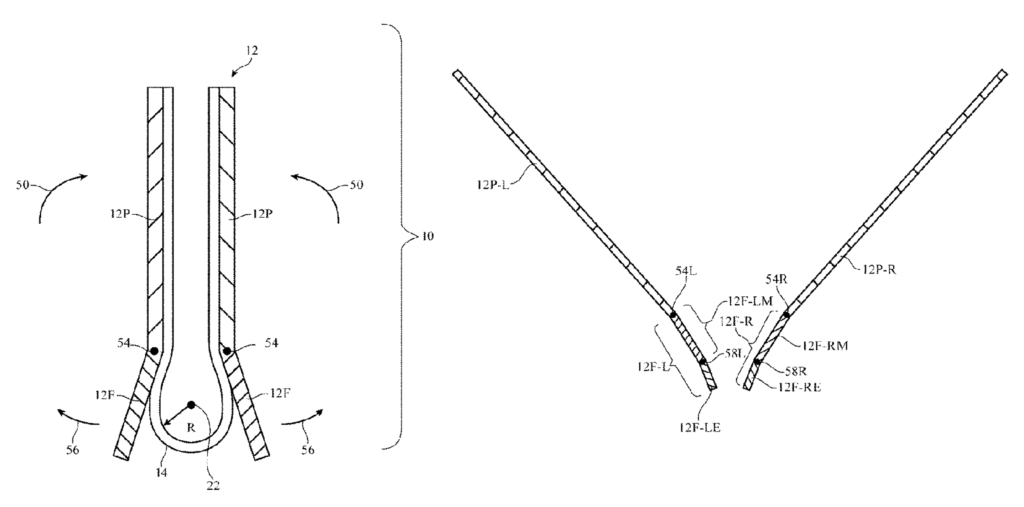Foldable smartphones, foldable tablets – a topic that not everyone likes. Nevertheless, Apple also seems to be interested in it and the best thing is: Apple could have finally solved the problem with the folding mechanism.
Whenever I write about a foldable device, I ask you the same question: "What about a foldable iPhone—yes or no?" Most of you don't want to hear about it and hope that Apple never introduces either a foldable iPhone or a foldable iPad. But dear Apfelpatienten, Apple seems to be very interested in the topic—existing patents at least prove it. Whether everyone could need a foldable iPhone or iPad is another story. But honestly, I personally wouldn't mind a foldable iPad. In some cases, it would even be very useful to have a large display on the go. But now let's get back to the latest Apple patent. Today's discovery proves once again that Apple has at least one foldable iPhone prototype—of course, no one knows whether we'll ever see a final version. But according to the patent, Apple may have finally solved the problem with the folding mechanism. The patent description states:
New folding mechanism reduces the load when folding
An electronic device may have a flexible display that overlaps an axis. The display may be supported by a housing. The housing may have first and second portions that rotate relative to each other about the axis. The housing may be placed in an unfolded configuration to support the display in a planar state. The housing may also be placed in a folded configuration by rotating the first and second portions relative to each other. A hinge mechanism may be used to ensure adequate separation between the first and second portions when the housing is bent. Movable flaps may be retracted when the housing is bent to make room for a bent portion of the display. A hinge mechanism may be used to ensure adequate separation between the first and second portions of the housing when the housing is bent. This ensures that the flexible display can maintain a desired minimum bend radius near the bend axis. The hinge mechanism may be based on a rack and pinion arrangement or other arrangement that maintains the first and second housing portions a desired distance from each other. In another arrangement, the housing may have movable flaps that extend parallel to the bending axis. The movable flaps may be placed in a planar configuration to support the display when the housing is in its unbent state. The movable flaps may be retracted when the housing is placed in its bent state. This makes room for a bent portion of the display along the bending axis.
Display is bent outwards
But what exactly does that mean? Basically, Apple is explaining a folding mechanism that is supposed to reduce the strain on the display when it is folded up. This would significantly reduce the risk of "creasing". According to the attached sketches, Apple seems to be bending the display slightly outwards to have more room to move, and that is exactly what the solution is supposed to be. It is of course not known whether this technology will work in the long term. But unlike Samsung, this idea seems to make much more sense. However, it should be noted that not every patent ultimately makes it into series production and whether we will actually see a foldable iPhone or iPad is up in the air - there are hardly any concrete indications so far. (Photo by artmagination / Bigstockphoto)
- Leak: Video supposedly shows new folding phone Galaxy Z Flip
- Apple Patent: This is what the foldable iPhone could look like
- Apple Patent: How the folding mechanism should be protected from cold






